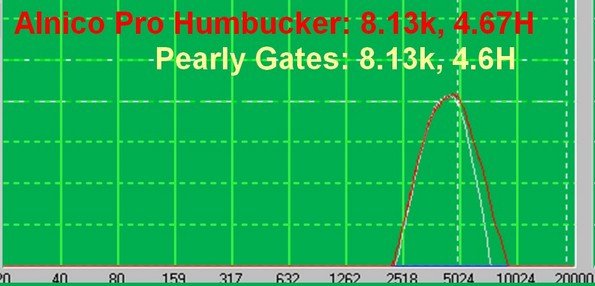Well, I've more than once shared here some charts of pickups played direct to the board and suggesting how their "cumulative" frequency response was following their resonance peak with such or such RC load, etc.
But as a matter of fact, thinking that two pickups sound the same because they have same resonant peaks / Q factors is like considering that two human beings are identical because they share a same silhouette on a picture, for instance - comparison inspired by what Bill Lawrence was saying about the size of shoes and to take with a grain of salt: I'm joking to dedramatize what is after all a rather futile question.

Again, non linear properties and what happens in the time domain are to take in account IME and IMO (and are to me a missing link from physics to psychoacoustics / human perception) when
two pickups share a same resonance peak but still sound different in a same guitar / with identical settings - which is not rare at all... 
(my bolding)
"Identical settings" is an interesting notion when in comes to solid-body guitars. Whenever someone says - as they commonly do in forums - "I have two guitars that are identical" (usually followed by "except for the wood"

), it's almost always the case that they have very little idea of what "identical" means. Thirty years of measurements of real guitars by (guitar-playing) scientists has shown that there are many, many things that can affect the sonic profile of solid-body electric guitars. Many are not well-known to players. Many are difficult to check. Many are difficult to fully control.
Changing pickups involves a number of possible changes in factors that have been shown to be sonically influential. The strings usually have to come off, which means that the guitar may have new strings. String sonic variability is a thing, as are aging efffects. We do not actually know how much the distance of a pickup from the strings has to change in order to produce a sonic difference hear-able by x% of people in a blinded test. Yet we rarely see any real precision applied to equating pickup heights.
Where pickups have different magnets, you would need to know the magnet strength vs distance function (inverse square or inverse cube) for each magnet, so that you could equate the field strength to which the string is exposed for each pickup (incidentally there is little reason to believe that different Alnico grades have different
intrinsic "sounds" - but they do have different, easily-measured strengths ... that is likely why pickups with different Alnico grades can sound different*). If the string is saturated by both magnets at their particular heights then that no longer matters.
*which means that changing magnets would be no different to changing pickup heights
You said "same resonance peak". Did you mean same Q factor too ? Which two pickups have the same resonance peak and Q factor yet sound different when the magnet effect is normalized as above ?
And one would also need to measure the magnet strength of each pole piece or at each strings' screw. Which is not that hard to do with a gaussmeter. There is considerably published evidence that common pickups do not always have consistent magnet strength across all pole piece magnets or along the length of a pickup bar magnet (eg Zollner 2014; Jungmann 1994).
Jungmann, T. (1994). Theoretical and Practical Studies on the Behaviour of Electric Guitar Pick-Ups. Diploma Thesis, Electrical Engineering Degree, Helsinki University of Technology.
Zollner, M. (2014). Magnetic pickups. Ch 5 in:
Physics of the Electric Guitar.
https://www.gitec-forum-eng.de/the-book/
So there's no single test or measurement that tells the whole story. But suggesting as other people do, that we need to learn all about coil wire dimensions, insulation and variability, different magnet manufacturing techniques, variations in bobbin geometry or winding techniques, would be moving us further
away from the relatively simple measurements that have a predictable
direct effect on key aspects of how a pickup sounds ... rather than closer to that understanding.


